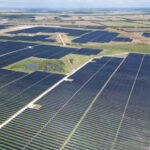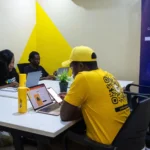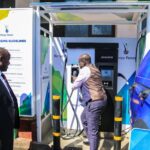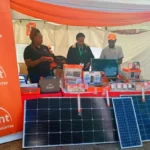
In an effort to minimizing our carbon footprint, more and more homes are turning towards solar power as a source of electricity. Theoretically, it’s quite simple. When sunlight falls on the solar panels, it is converted to usable electricity that can be distributed through the house by the solar inverter. That said, before you decide to start using solar power, there are a few other things you should know.
Using solar power doesn’t mean you have to be cut off from the main power grid
When you think of solar energy you assume that you are no longer connected to the main power grid. However, this is not always the case. Solar power systems can be set up as grid connected and off grid systems. A grid connected system is one where you maintain your connection with the main power grid. In this case, the excess power generated during the day can be shared with the grid in exchange for credits. Later, at night or during the monsoon and winter months when your solar panels aren’t able to generate enough electricity, you can draw power from the main power grid.
There are many advantages to choosing a solar grid connected system. Firstly, by eliminating the need for a battery, it reduces your initial expense. Secondly, because the system is connected to the main power grid, you do not need to worry about electricity on days when the sun stays away.
The roof isn’t the only place for the solar panels
Solar panels play the most important role in solar power usage. This is where the sun’s energy is harnessed and converted into electricity. These panels must be installed in a place where they receive maximum sunlight through the day. Traditionally, this was the building’s rooftop but it isn’t the only place. Solar panels can also be installed as roofing for parking slots or even on the ground. The only thing you need to ensure is that the panels are not shaded by anything else. They should be installed in a place where there is no chance of a tree or another building or a hoarding that could obstruct the path of the sun’s light coming up in the future. The Kochi airport that is run by solar power has it’s panels installed on flat plains a little outside the airport.
Solar power systems are expensive to set up but cheap to maintain
Talking about solar power ultimately turns to how using solar power minimizes electricity bills. That said, the system can be a tad expensive to set up. To generate power from the sun’s energy, you will need solar panels, a solar inverter and a solar battery. You may also need additional elements like a charge controller, net meter, etc. If you choose a grid connected system, you can cut down on this expense since you won’t be needing a battery. But, once it’s installed and running, the system operates on its own with minimal manual effort. There is no switch you need to turn on and off or worry about moving the panels around. All you need to do is wash and wipe down the panels from time to time so that dust and debris do not accumulate on the panels. It is important to keep the panels clean as dust can affect the panel’s efficiency.
Branded is always better
Given the fact that installing a solar power system seems expensive, it’s tempting to shop for a local, unbranded inverter and battery. However, when you save here will be much more expensive in the long run. Unbranded inverters and batteries do not have a brand reputation to worry about and hence do not prioritize their quality control as much. The components are likely to be of poorer quality and have a higher chance of breaking down. They will have a shorter lifespan and need to be repaired and replaced more frequently. Hence, you’ll end up spending much more every time. You should also keep in mind the fact that mot brands offer exchange and upgrade programs. Thus, when you do need to get a new inverter or a battery, you’ll get it at a better price.
The solar power your home generates can power your neighbour’s home
One of the advantages of setting up a grid connected system is that you get to generate electricity not just to power the appliances in your home but also those in your neighbour’s home. It isn’t as direct as it sounds but your efforts do go a long way in reducing your neighbourhood’s carbon footprint. Most solar power systems generate the highest amounts of electricity in the afternoon. However, your consumption at this time is quite minimal. Thus, the power you don’t need gets shared with the power grid. From here, it is distributed to other homes in your neighbourhood. Thus, it reduces the overall dependency on fossil fuels for electricity generation.
You should also note that this system reduces power wastage. When power travels over distance, a certain amount of power is lost. The longer power has to travel, the more power is lost. With a grid-connected system, power has to travel a shorter distance from the source to the home where it will eventually be used. Thus, less power is lost and the grid becomes more efficient.
So, is a solar power system right for your home?
Solar power has a number of advantages but it isn’t necessarily the best choice for everyone. Let’s say you move cities often. You can’t keep moving the panels, the solar inverter and the battery. Thus, this solution works only for those people who know they are living in a home they won’t be moving from in the near future. If you know you’re living in a home you’re not going to move from, setting up a solar power system can make your home more sustainable and minimize your monthly electricity bills. Remember, the system may seem expensive at the onset but it soon pays for itself. So, are you ready to go solar?
Discover more from TechBooky
Subscribe to get the latest posts sent to your email.







